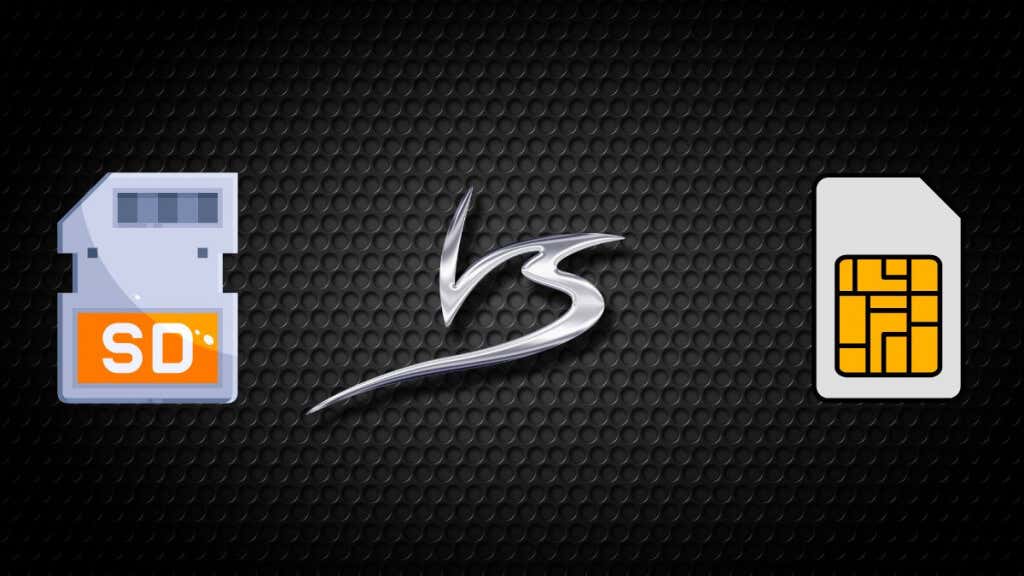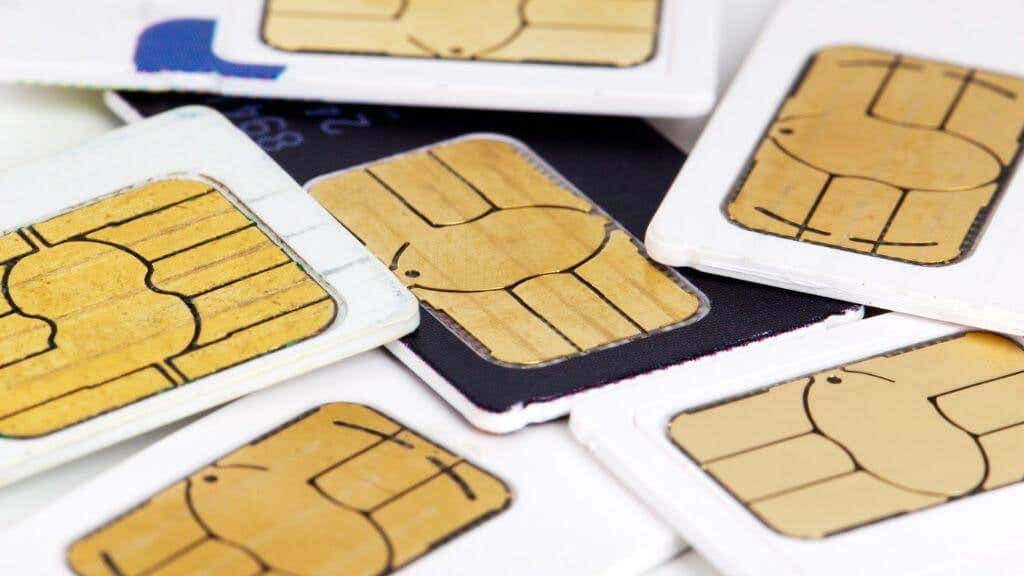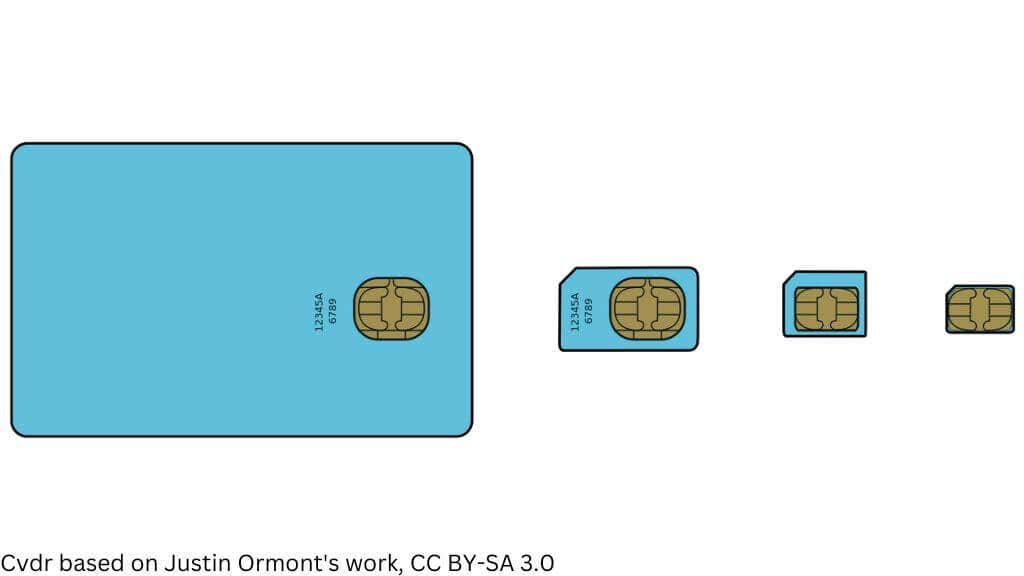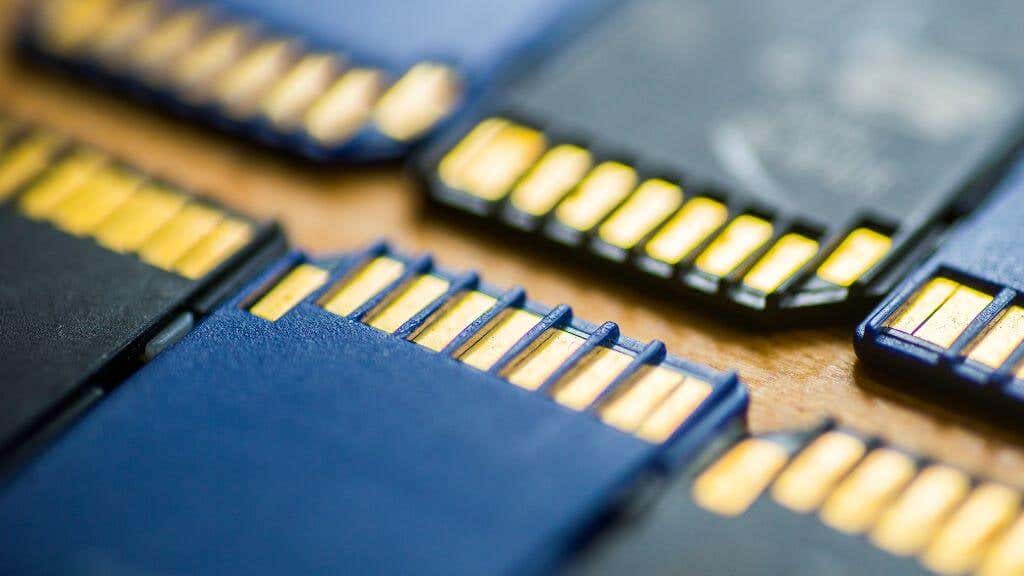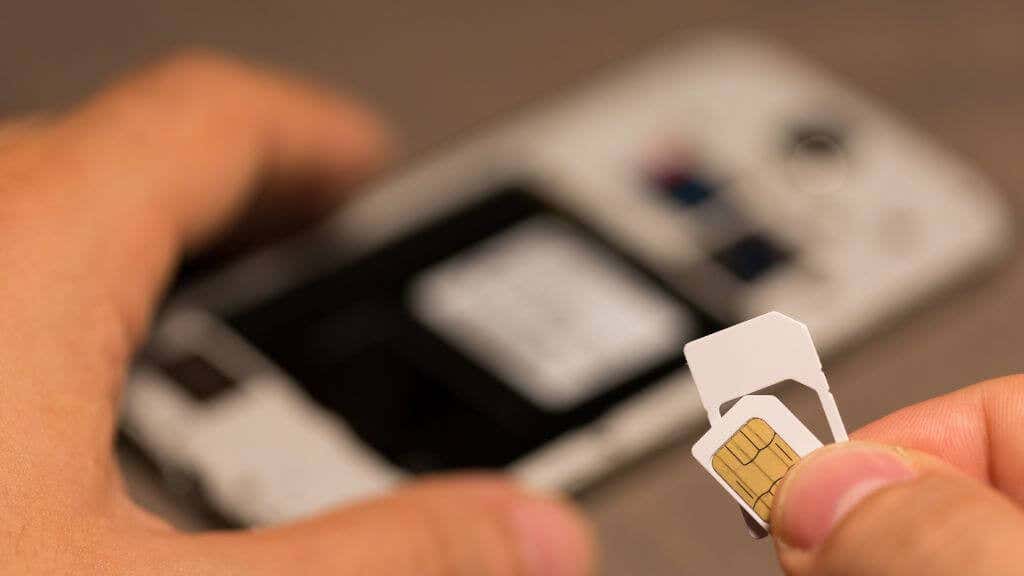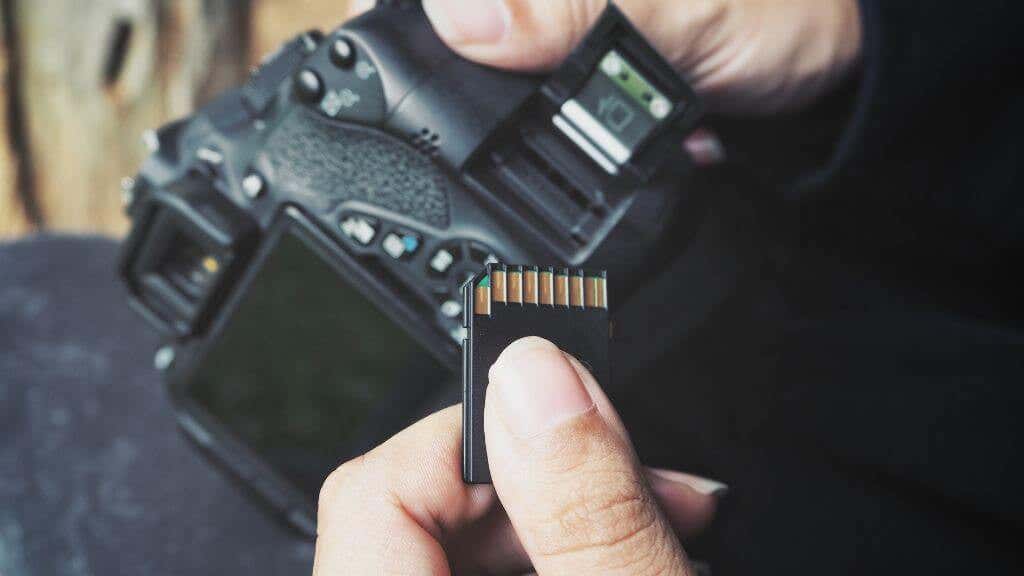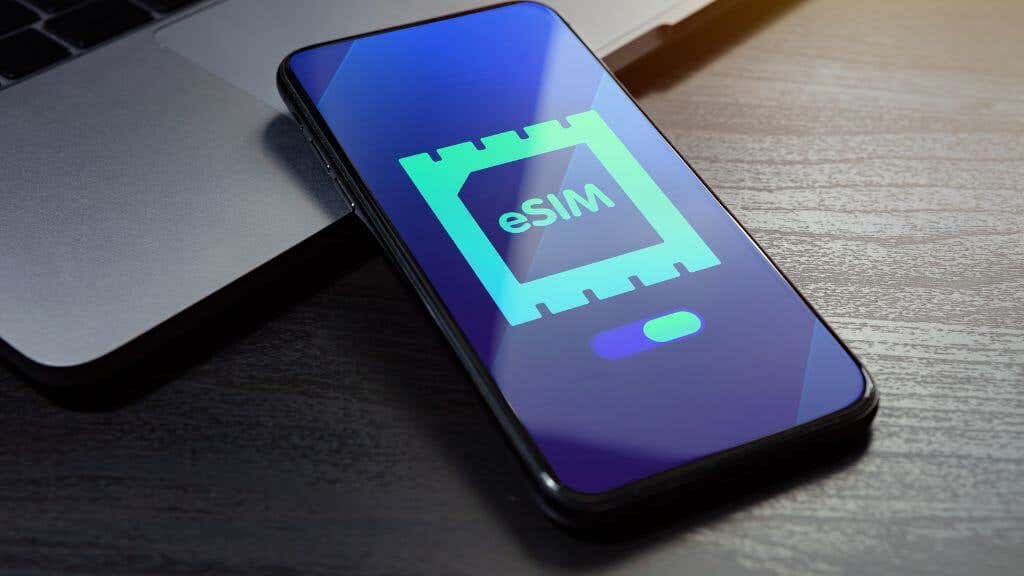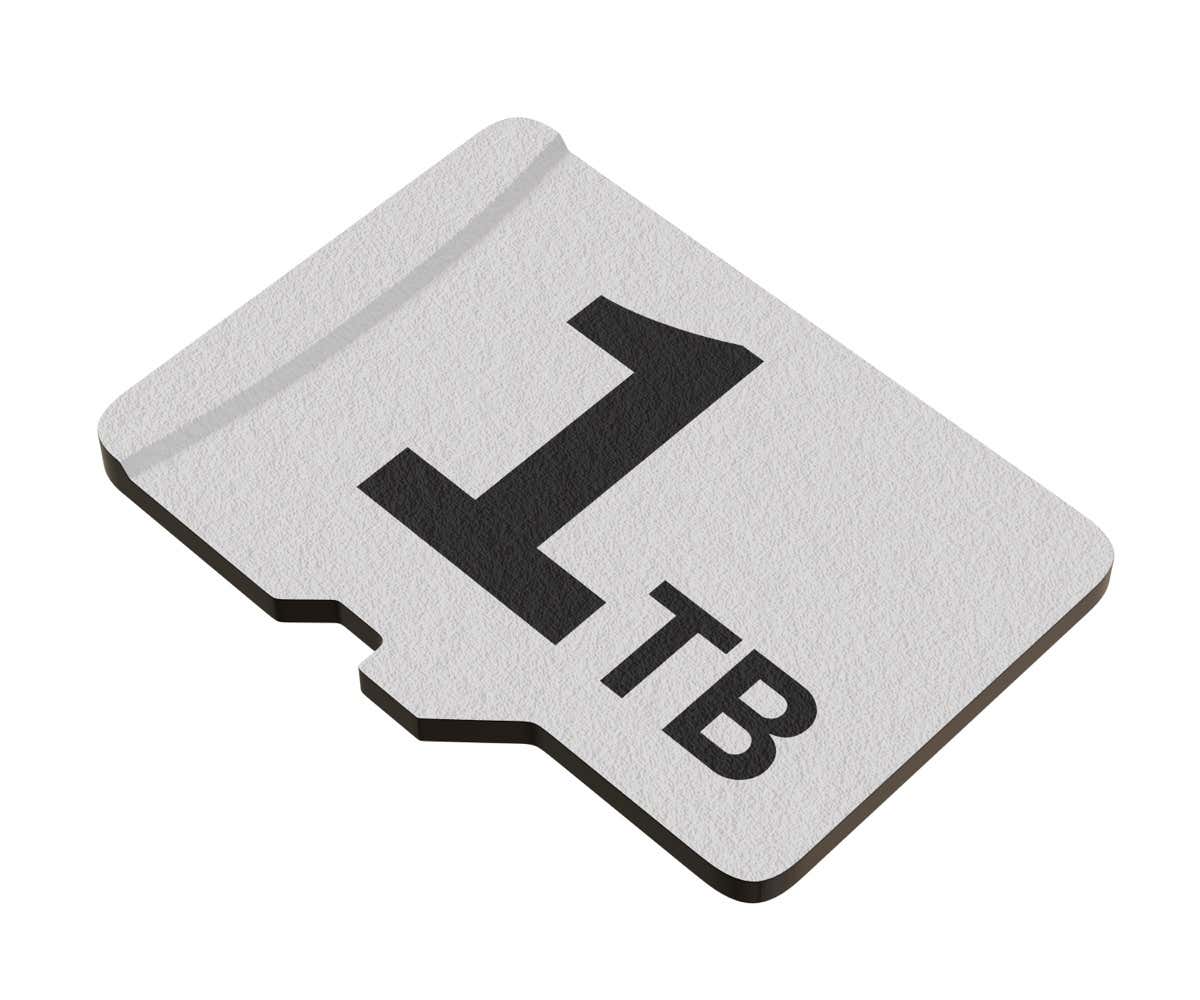Plus what the future may hold
SIM cards and SD cards can indeed look similar to the untrained eye. Both cards are used in mobile phones and other mobile gadgets. However, they have different histories, purposes, and functions.
The Basics of SIM and SD Cards
A SIM card or Subscriber Identity Module is a microchip that securely stores your mobile phone number and cellular network subscription data.
It lets mobile phones make phone calls, send text messages (SMS), and use data services on a GSM cellular network. Mobile phones have a dedicated SIM card slot, and the card’s size can range from a full-size SIM to a nano SIM card.
An SD card, short for Secure Digital card, is a flash memory card used as additional storage for digital data. SD cards can range from standard SD to microSD or (rarely used) miniSD. They’re found in various electronic devices, including Android smartphones, digital cameras, and game consoles like the Nintendo 3DS and Switch.
The main difference between a SIM card and an SD card lies in its functions. A SIM card gives your device its identity, enabling it to make phone calls and send text messages. In contrast, an SD card is essentially a portable drive that can be inserted into various electronic devices to store data.
While some devices have separate slots for each card type, others, particularly smartphones, can use a combined slot. For example, some Samsung Galaxy models often have a hybrid slot where you can place two SIM cards (dual SIM functionality) or one SIM card and one microSD card for additional storage. However, this does not mean that SIM or SD cards have anything in common since these hybrid slots simply use clever engineering design to integrate both discrete standards.
Now that we have a good overview of SD and SIM cards, let’s have a closer look at each in turn.
SIM Cards: The Key to Mobile Connectivity
A SIM card is like your mobile phone’s passport. It identifies you to the mobile network, allowing you to place phone calls, send SMS or use apps like WhatsApp that require a mobile phone number. The tiny chip contains an International Mobile Subscriber Identity (IMSI) number and keys for encrypting voice and data traffic.
The SIM card has no storage capacity for photos, videos, or apps. However, it does store specific information like your phone number, SMS, and contacts, depending on the phone’s settings and mobile network.
SIM cards come in four sizes — full-size, Mini SIM, micro SIM cards, and nano SIM cards.
Now, there’s a good chance the “full-size” SIM you’re thinking of is the wrong one! These credit card-sized SIMs aren’t in use anymore, and the largest SIM card size you’ll still see is the Mini SIM, but even that is getting rare. It’s typical to get a 3-in-1 SIM package. these days with the mini, micro, and nano SIM sizes built into one card. You simply break out the size your device needs. The nano SIM has virtually no plastic material around the metal contacts, thanks to how much microchip technology has advanced.
Thanks to these modern nano sims, it’s possible to have compact dual-sim phone. This means you can have two different phone numbers or mobile network subscriptions on the same device; a handy feature for frequent travelers or those juggling work and personal numbers.
SD Card: Your Mobile Data Warehouse
An SD card’s primary function is data storage. It acts as an extension of your device’s internal storage, providing additional storage capacity for your files. You can use it to store data like photos, videos, apps, and other content on your Android phone or other devices that use SD card technology such as cameras.
Unlike a SIM card, an SD card doesn’t provide network functionalities or store your mobile phone number. Its only goal is to offer extra storage space. That’s why when you get a new phone, all your apps and media files can be transferred seamlessly if you’ve stored them on your SD card.
SD cards come in various storage sizes, from a few gigabytes to a whopping 1TB or more. Leading brands like SanDisk offer a range of SD cards readily available online from retailers like Amazon.
SD cards also come in different formats. Full-size SD cards are typically used in digital cameras and laptops, while microSD cards are more common in smaller gadgets like mobile phones. Devices without an SD card slot can still access SD card data using a USB card reader, assuming they have the requisite USB port.
SIM and SD Card Support in Android and iOS Phones
For Android phones, both SIM and microSD cards are frequently used together. This means you don’t have to worry too much about buying the biggest capacity Android phone you can afford, since you can always expand your storage.
On the other hand, SD cards are not nearly as reliable as your phone’s internal storage, and spontaneous SD card failure happens when you can least afford it. So always make backups!
Apple iPhones differ slightly. iPhones also use a SIM card for network capabilities. But instead of using a microSD card for additional storage, they rely solely on internal storage. This design choice is why you must carefully choose the storage capacity when purchasing an iPhone. On the upside, you will have much higher reliability and speed than an SD card, although Apple charges a significant premium for larger storage sizes.
From Mobile Phones to Other Devices
While SIM cards are mainly associated with mobile phones, SD cards have a broader range of applications. For example, digital cameras typically store high-resolution photos and videos with full-size SD cards. Game consoles like the Nintendo Switch use microSD cards to expand storage for games and saved data.
Moreover, some electronic devices use SD cards for operational purposes. A case in point is the Raspberry Pi, a mini-computer popular among DIY enthusiasts and educators, which uses an SD card to store the operating system and program files.
You will of course find SIM cards in devices that are not mobile phones. This includes USB cellular modems, laptops with built-in cellular functionality, iPads with cellular access, and even the Sony Vita had a cellular model.
eSims: The End of SIM Cards?
SIM cards have gone from credit card sized to the tiny nano size, and might now become essentially invisible. We’re seeing the transition from physical SIM cards to the latest technological innovation – the eSIM or embedded SIM.
So, what exactly is an eSIM? It’s a small, non-removable chip embedded directly into your device. The eSIM does everything a regular SIM does, storing your subscriber profile and allowing your device to connect to a cellular network. However, the eSIM eliminates the need for a physical card and, consequently, a SIM card slot.
The primary advantage of eSIM technology is its convenience. With an eSIM, you can switch between carriers or data plans without needing a new SIM card. This means no more fiddling with tiny cards or hunting for a paperclip to open the SIM card slot. Instead, you can manage your mobile subscription directly from your device settings.
Leading tech companies are embracing eSIM technology. Apple, for example, has incorporated eSIMs into its newer iPhone models, iPad Pro, and Apple Watch. Google’s Pixel phones also feature eSIM technology, and Samsung’s latest Galaxy models provide both a physical SIM slot and an eSIM for added versatility.
It’s worth noting that while eSIM technology offers many advantages, it also has a few drawbacks. For one, not all carriers support eSIMs, and the availability of eSIM functionality can vary by region and device model. Also, the permanence of eSIMs could be a disadvantage in specific scenarios. For instance, removing a physical SIM card is easier than ensuring the eSIM has been properly erased and deactivated if you’re selling your phone.
The Future of SD Cards
As we’ve seen with SIM cards and the emergence of eSIMs, the world of SD cards is also on the brink of exciting new developments. Technology continually pushes the boundaries, expands storage capacities, and creates alternatives that could reshape how we approach data storage.
The biggest SD card you can buy is a whopping 1TB, offering a vast reservoir of storage that could easily accommodate high-resolution photos, 4K videos, extensive game files, and much more. Imagine carrying an entire library of multimedia content in a chip smaller than a postage stamp. That’s the reality we’re living in today, thanks to microSD cards.
But even as we gawk at existing 1TB cards, the horizon of innovation is extending further. We’ve already seen the announcement of a 1.5TB SD card. And a 2TB prototype microSD card has already been showcased in an even more remarkable demonstration of potential. There’s also a new official SD card standard known as SDUC (SD Ultra Capacity) which promises cards up to 128GB in size. There have been no examples of this that we could find, but it does paint the roadmap for SD technology over the coming years.
Beyond SD Cards
While SD cards are evolving, so are the technologies that might someday replace them. For instance, cloud storage has surged in popularity in recent years. Services like Google Drive, Dropbox, and Apple’s iCloud offer ample storage space that can be accessed from any device with an internet connection. The advantage? You don’t have to worry about losing or damaging physical storage cards, and you can easily share your files with others.
However, cloud storage has drawbacks and only partially negates SD card needs. Issues like data privacy, a steady internet connection requirement, and ongoing subscription costs can make SD cards a more practical option for many people.
Additionally, the rise of internal device storage is another factor to consider. Smartphones, tablets, and laptops offer ever-increasing built-in storage capacities, reducing the need for expandable storage via SD cards. SSD (Solid State Drive) technology keeps bringing down the per-GB price of internal storage, and phone storage is becoming so large that most people won’t need SD card storage. This leaves the removable, portable, and swappable nature of SD technology as its main advantage.

